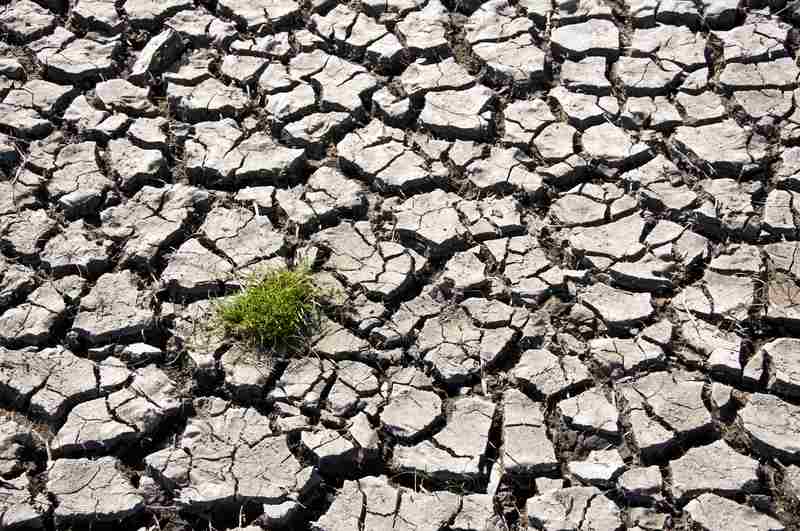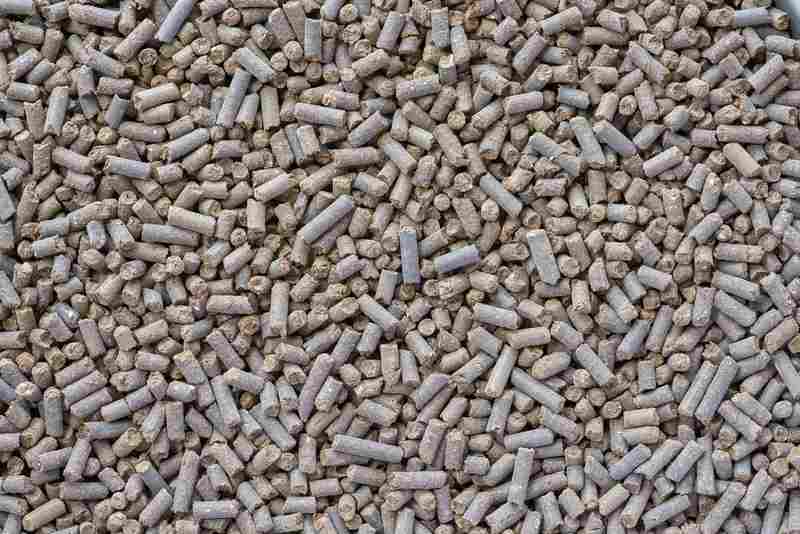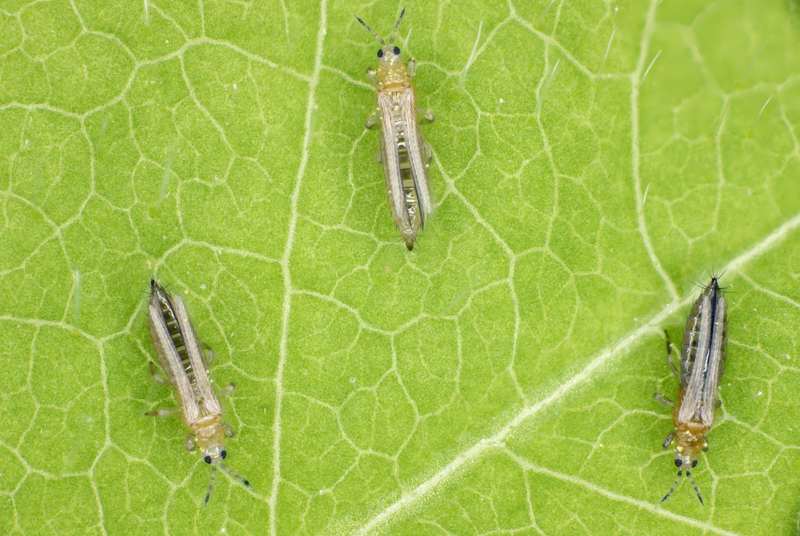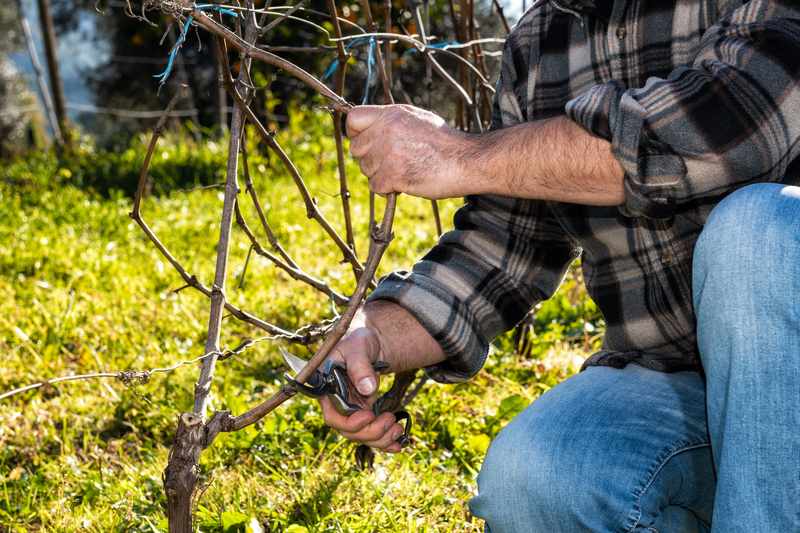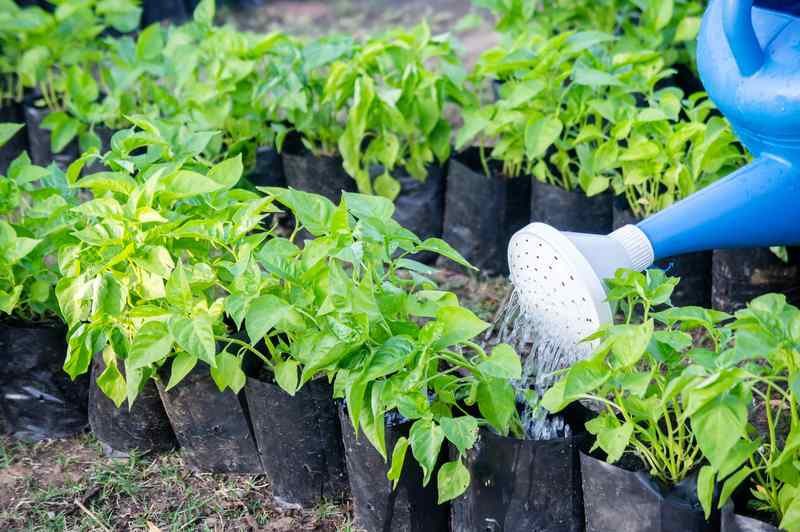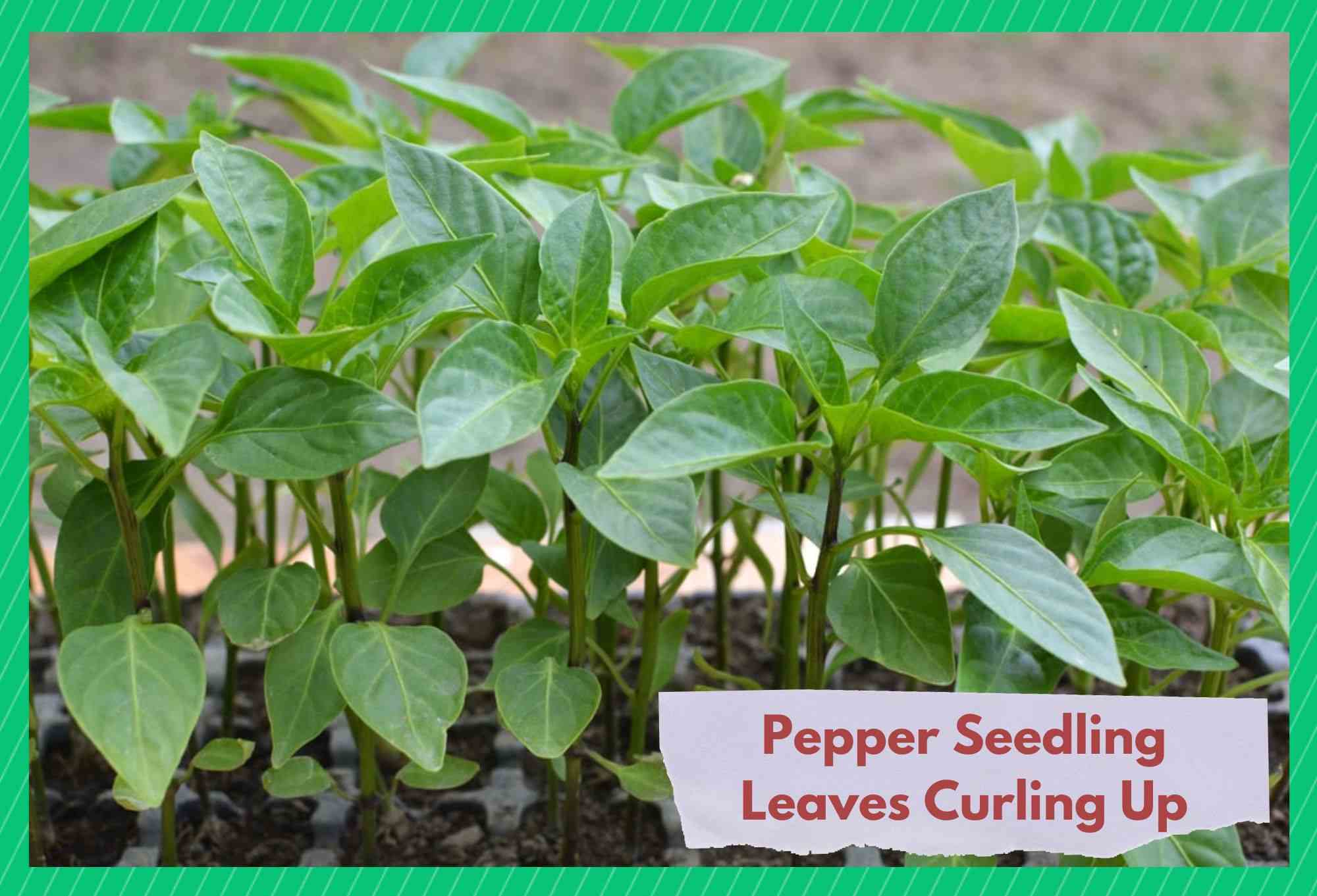
Peppers are a vibrant and attractive crop because of their glossy fruits of many colors, shapes, and sizes. All peppers share a preference for long, warm growing seasons, from sweet, crisp rainbow-colored peppers to scorching-hot habanero peppers.
Plants should be removed once the weather has settled and warmed up after your last frost. During cool weather, move seedlings outside during the day to a protected sunny spot and back indoors at night.
Pepper Seedling Leaves Curling Up:
To grow pepper successfully, it takes a lot of effort. Despite its aggressive nature, pepper does not require special care. There are, however, several things that could go wrong with it.
A lack of proper maintenance causes some of them, while an inability to control others causes others. A common problem that pepper plants encounter is leaf curling .
Look for watering problems or insufficient temperature and humidity conditions when you notice your pepper plant leaves curling. Plant edema, disease, pests, or inadequate nutrients could also be the cause.
The roots of the plant may not have enough space to grow if it is in a pot. All of these problems require unique solutions. Find out how to keep your pepper plants healthy by addressing each issue.
- Dehydration
It’s often a sign of a lack of moisture when your pepper plant leaves curl upward. A plant retains as much moisture as possible by curling its leaves. The leaf’s surface area shrinks as the leaf edges are drawn inward, preventing moisture loss through evaporation.
Leaf curl is often caused by dehydration and can be detected by a few signs, including drooping leaves . The leaves on the bottom of your pepper plant tend to curl first if your plant is underwatering. Yellow leaves may also result from underwatering, along with leaf curl.
In order to grow peppers, the soil should be evenly moist – neither too dry nor too wet. If the top 1-2 inches of soil feel dry, monitor it and water it.
Depending on your local weather conditions and the soil in your garden, you might need to water more often.
My container pepper plants need to be watered every morning during our midwestern summer. Sometimes I need to water the plants again in the evening during the hottest periods
- Too Much Sunlight
Pepper plants require light to thrive. If you are growing peppers outdoors, the problem of lighting is unlikely to be an issue since most pepper varieties prefer full sunlight.
Your plants may curl up and close in rebellion from the intense light if they are too close to the light. Pepper leaves can turn brown and crumble when squeezed due to this problem, eventually drying up and falling off.
Because of too much light, pepper plants growing indoors are much more likely to curl. Too many leaves are too bright or close to the sunlight. When the light is too strong, the leaves curl upwards. As a result of excessive light, plants may also develop browning, sun scalding, and leaf loss.
A young, tender pepper is more prone to developing this problem than an older pepper. Plants in the growing stage are generally more sensitive than plants in more mature stages.
If your plants suffer from light burn, raise your lights a couple of inches. At least 12-18 inches should be between the canopy and the grow light.
Also, make sure your lights are on for 12-16 hours a day, then turn them off. If your light is on 24/7, ensure the timer is working correctly.
- Calcium Deficiency
The curling leaves of your pepper plant could be caused by a calcium deficiency. The 16 essential plant nutrients include calcium, which helps maintain the health of your plants. Calcite is primarily responsible for supporting plant cell walls during growth.
Plants that are deficient in calcium show symptoms such as stunted growth and leaf curling. In addition, there may also be brown spots on the leaves.
Your plant’s soil needs to be provided with calcium if it is suffering from a calcium deficiency. To boost the availability of this vital nutrient and to improve plant health, add bone meal.
Another method of adding calcium to your soil is to use organic fertilizers. The composition of all-purpose fertilizers may or may not include calcium, so be sure to check! Calcium is often included in potting mixes as well, though it isn’t always the case.
- Insects
Plants get attacked by insects once in a while, and that’s normal. In the end, however, it is your reaction that determines the survival of your plant. There are several pests that are known to attack pepper plants, such as thrips, aphids, spider mites, greenhouse whiteflies, and broad mites.
When your pepper plant’s leaves curl upward, you know it’s being attacked by pests. Leaves that have not been affected will appear healthy and normal, while those that have been affected will curl upward.
Pepper plants are susceptible to leaf curl caused by pests like aphids, thrips, mites, and whiteflies. If insects attack on leaves during their development period, depending on where they were provided and when they mature, they become spotted or stippled as they grow older or dry out and fall off.
Pepper plants are susceptible to pest infestations, so you must act quickly if you observe pests on their leaves. Insecticidal soap or neem oil can be used to combat pests. You should continue the treatment as soon as you’re certain that the pests are gone.
- Cultural Damage
Leaf curls can also be caused by other cultural conditions. Severe pruning can be detrimental to an indeterminate tomato variety’s health compared to a determinate variety. Prune the plants over a period of several days so they can recover from the pruning rather than removing too many leaves at once.
In some cases, leaf roll is caused by soil nitrogen deficiency. Nitrogen levels in the soil are measured, and fertilizer types and amounts are determined by soil testing.
- Viral Or Fungal Diseases
Diagnoses and corrections of disease issues are the most challenging. In addition to their ability to spread disease, pest populations should be kept low. There is a greater risk of disease spreading to your garden if you live in an area with a high concentration of agricultural activity.
Ensure that the garden is diverse by taking extra care. You should keep on observing starting signs of viral disease.
As a result of the curled foliage, mosaic viruses leave behind a mosaic-style pattern. Plants are affected differently by different strains of bacteria. It is a disease that causes yellowing and curling of leaves on the tops of plants. There is no fungal component to these diseases.
It is not possible to cure viruses, unlike some fungal diseases. Before assuming that your plants have a virus and pulling them, rule out all other causes. Pull any plants that are affected by a viral disease and make sure all your gardening tools are sanitized to prevent the disease from spreading.
- Hot Winds
Peppers can curl their leaves inwards quickly when hit by hot winds. Water is lost from the leaves, most often through curled leaves, which act as a form of defense.
During extreme weather, the plant keeps its stems and roots moist to ensure survival. To keep the pepper plants adequately moist, you should change your watering habits.
Water your peppers early in the morning if you know it will be a hot, windy day. A 50% shade cloth can be draped over the top to reduce wind damage.
In hot and windy weather, pepper plants will recover quickly if you water them appropriately. You should water them at the end of the day, but you should avoid watering the leaves.
The Bottom Line
A wrong agricultural process is often responsible for the curling of leaves in pepper seedlings. By controlling the temperature and watering on time, the first signs can be eliminated.
A pepper plant needs to be adequately cared for and sprayed against pests in order to produce a crop. Make sure the bushes are regularly inspected and that the leaves are not curled or in excellent shape.
Pepper plants produce more fruit when they are healthy. As you quickly deal with the curling issue, it shouldn’t be a problem for you anymore. Having the right plant conditions and sufficient water can keep these plants healthy and fresh.
You should consult an agriculturist or expert before using fertilizer on pepper plants. Above listed solutions can help you save your pepper plants from problems like leaves curling.

